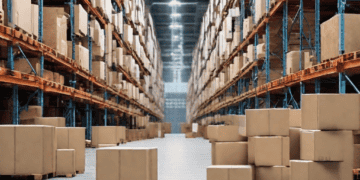Welcome to another edition of The Supply Chain Report, where we delve into the transformative potential of blockchain technology within supply chains. In this installment, we will examine a fundamental yet compelling use case: inventory traceability, with a specific focus on food traceability. Picture a scenario where a simple QR code scan on a package of strawberries unveils the complete journey from the farm to your local grocery store. With blockchain technology, this vision is not only achievable but is rapidly gaining traction across supply chains.
The Challenge of Traditional Supply Chains Conventional supply chains tend to compartmentalize information within each organization involved in the product’s journey. This fragmentation poses a significant challenge when it comes to tracing the origins of food items, especially in cases of contamination or fraud. For instance, in the event of discovering a contaminated batch of strawberries, the process of retracing its source can be laborious and time-consuming. Such delays can result in increased health risks and waste, as retailers may need to discard entire stocks of strawberries as a precautionary measure.
The Role of Blockchain Blockchain introduces a decentralized ledger characterized by immutability, transparency, and accessibility to all participants in the supply chain. When a batch of strawberries is harvested, farmers can record vital information such as the harvest date, location, and quality checks directly onto the blockchain. As these strawberries traverse the supply chain, passing through distributors, processors, and retailers, each party can contribute their respective data to the same blockchain ledger.
The Advantages
- Transparency: Consumers have the ability to scan a QR code and access a wealth of information, providing an unprecedented level of transparency.
- Speed: In the event of a contamination issue, the affected batch can be swiftly and accurately traced back to its source, facilitating targeted recalls.
- Trust: The immutable nature of blockchain ensures that once information is recorded, it remains unaltered, fostering trust among all stakeholders.
- Efficiency: Automation of the traceability process can lead to cost savings for companies and swifter delivery times for consumers.
A Real-world Illustration Organizations such as the Blockchain Council of the Philippines and the Supply Chain Management Association of the Philippines, in collaboration with the LINK consortium blockchain, have forged partnerships with major logistics companies and retailers to implement this technology. Through a QR code scan on a proof of delivery, one can now authenticate and trace the origin of a package.
The LINK initiative was officially launched during SCMAP’s Supply Chain Conference on September 22, 2023. Further details will be made available in due course.
In Conclusion Blockchain transcends mere buzzwords, presenting a technology that offers tangible enhancements to supply chain operations. While food traceability serves as a foundational illustration, the potential applications are limitless. From pharmaceuticals to automotive components, the foundation for transparent, efficient, and dependable supply chains is being laid today, and blockchain is at the forefront of this transformative evolution.
Stay informed with supply chain news on The Supply Chain Report. Free tools for international trade are at ADAMftd.com.
#SupplyChainRevolution #BlockchainTechnology #FoodTraceability #InventoryManagement #BlockchainInSupplyChain #TransparentSupplyChain #EfficientLogistics #QRCodeTracking #FoodSafety #SmartLogistics #BlockchainInnovation #SupplyChainTransparency #TrustInSupplyChain #BlockchainForGood #SCM #TraceabilityTech #LogisticsSolutions #BlockchainCouncilPH #LINKConsortium #BlockchainForBusiness

















